Who discovered the flu vaccine. History of Influenza Vaccination: From Bacterial Misunderstanding to Modern Flu Shots
How did early scientists mistake influenza for a bacterial infection. When was the influenza virus first identified. What major advancements led to the development of effective flu vaccines. How have influenza vaccines evolved over the past century.
The Early Misunderstanding of Influenza’s Cause
In the late 19th and early 20th centuries, scientists mistakenly believed that influenza was caused by bacteria rather than a virus. This misconception stemmed from German scientist Richard Pfeiffer’s 1892 discovery of a bacterium he named ‘bacillus influenzae’ in the nasal passages of flu patients. This erroneous understanding hampered early vaccine development efforts, particularly during the devastating 1918 influenza pandemic.
The 1918 Influenza Pandemic
The 1918-1919 H1N1 influenza pandemic, often referred to as “the mother of all pandemics,” was a global catastrophe. It infected an estimated 500 million people worldwide and claimed between 20 and 50 million lives. The pandemic’s impact was so severe that it caused life expectancy rates to drop by several years globally.

Why was this pandemic so deadly? The H1N1 strain that emerged in 1918 was particularly virulent, especially during the second wave of infections later in the year. The resulting death toll surpassed that of the entire First World War, underscoring the urgent need for an effective vaccine.
The Race for a Vaccine During the 1918 Pandemic
As the 1918 pandemic ravaged populations worldwide, researchers in the United States and Europe scrambled to develop an effective vaccine. Their efforts resulted in the production of hundreds of thousands of doses. However, these early attempts were fundamentally flawed due to the misunderstanding of influenza’s cause.
Why did these early vaccine attempts fail? Scientists were targeting bacteria instead of the actual viral culprit, rendering their efforts ineffective against the true cause of influenza.
The Breakthrough: Identifying the Influenza Virus
The turning point in influenza research came in 1933 when British scientists made a crucial discovery. They successfully isolated the influenza virus, finally providing researchers with the correct target for vaccine development. This breakthrough opened the door to creating truly effective influenza vaccines.

Key Milestones in Early Influenza Virus Research
- 1933: British researchers isolate the influenza virus
- 1935: The first flu vaccine is developed using live attenuated viruses
- 1936: Researchers discover that the flu virus can be grown in embryonated chicken eggs
- 1942: Large-scale production of flu vaccines begins, with the U.S. military receiving the first batches
The Evolution of Influenza Vaccine Production
Following the identification of the influenza virus, vaccine development progressed rapidly. The ability to grow the virus in embryonated chicken eggs, discovered in 1936, proved crucial for large-scale vaccine production. This method remains in use today, alongside newer cell-based and recombinant technologies.
How has flu vaccine production changed over time? While egg-based production continues to be widely used, advances in technology have introduced new methods:
- Cell-based vaccines: Grown in animal cells, offering a faster production process
- Recombinant vaccines: Produced using genetic engineering techniques, eliminating the need for egg-based or cell-based growth
- Adjuvanted vaccines: Containing immune-boosting substances to enhance vaccine effectiveness, particularly in older adults
The Challenge of Viral Mutation and Annual Vaccine Formulation
One of the greatest challenges in influenza vaccination is the virus’s rapid mutation rate. This characteristic necessitates the annual reformulation of flu vaccines to target the most prevalent strains predicted for each flu season.
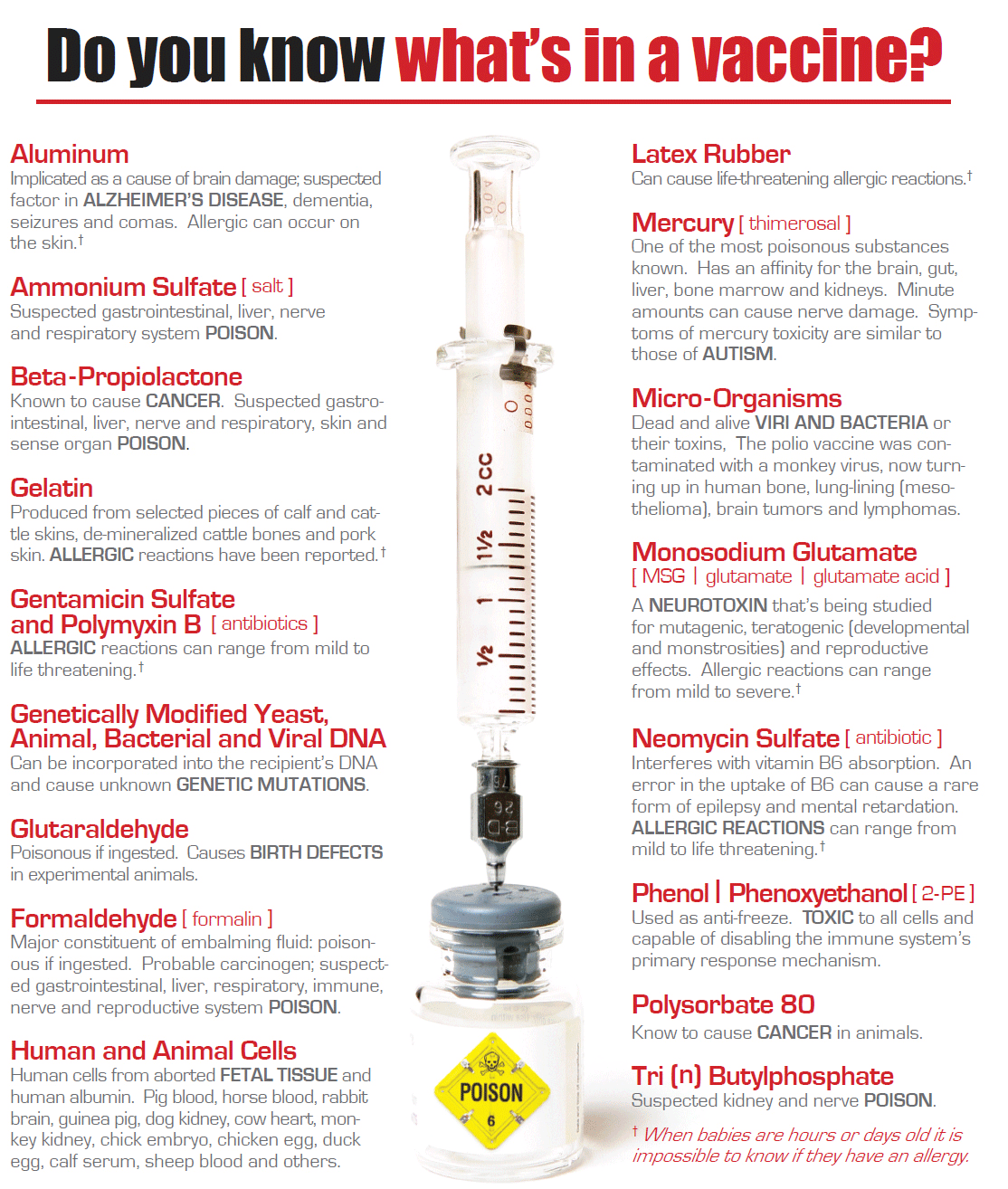
How do scientists determine which strains to include in each year’s vaccine? The World Health Organization (WHO) operates a Global Influenza Surveillance and Response System, monitoring influenza activity worldwide. Based on this data, experts meet twice annually to recommend the composition of flu vaccines for the Northern and Southern Hemispheres.
The Composition of Modern Flu Vaccines
Today’s influenza vaccines typically protect against three or four different flu strains:
- Trivalent vaccines: Protect against two influenza A strains and one influenza B strain
- Quadrivalent vaccines: Protect against two influenza A strains and two influenza B strains
Advancements in Vaccine Technology and Distribution
The field of influenza vaccination has seen significant advancements beyond just the production methods. Researchers continue to explore new ways to improve vaccine efficacy, distribution, and administration.
Novel Vaccine Delivery Methods
How are scientists working to make flu vaccines more accessible and effective? Several innovative approaches are being developed or are already in use:

- Nasal spray vaccines: Offering a needle-free option, particularly appealing for children
- Microneedle patches: Painless, easy-to-apply patches that could potentially be self-administered
- Universal flu vaccines: Aiming to provide broad protection against multiple strains, potentially eliminating the need for annual shots
The Impact of Influenza Vaccination on Public Health
Since their introduction, influenza vaccines have played a crucial role in reducing the burden of flu-related illness, hospitalization, and death worldwide. While effectiveness can vary from year to year due to the challenge of predicting dominant strains, vaccination remains a key strategy in mitigating the impact of seasonal influenza outbreaks.
What are the broader benefits of widespread flu vaccination? Beyond individual protection, high vaccination rates contribute to community immunity, helping to protect vulnerable populations who may not be able to receive the vaccine themselves. This includes infants, immunocompromised individuals, and those with certain allergies.

Vaccination Recommendations and Global Efforts
Health organizations worldwide recommend annual flu vaccination for most individuals, with a particular emphasis on high-risk groups. The WHO aims to increase global vaccine production and improve access in low- and middle-income countries through initiatives like the Global Action Plan for Influenza Vaccines.
Ongoing Research and Future Directions
The field of influenza vaccination continues to evolve, with researchers exploring new avenues to enhance vaccine effectiveness and accessibility. Some key areas of ongoing research include:
- mRNA vaccine technology: Building on the success of mRNA vaccines for COVID-19, researchers are investigating their potential for influenza
- Improved adjuvants: Developing more effective immune-boosting substances to enhance vaccine potency
- Big data and machine learning: Utilizing advanced analytics to better predict viral mutations and optimize vaccine formulations
- Global surveillance networks: Enhancing worldwide monitoring systems to detect new strains and potential pandemic threats earlier
How might future influenza vaccines differ from those available today? While it’s challenging to predict specific outcomes, the goal is to develop vaccines that offer broader, longer-lasting protection against multiple strains. This could potentially lead to vaccines that need to be administered less frequently than the current annual recommendation.

The Role of Influenza Research in Pandemic Preparedness
The knowledge and infrastructure developed through decades of influenza research and vaccination efforts have proven invaluable in responding to other respiratory virus threats, including the recent COVID-19 pandemic. Continued investment in influenza research not only improves our ability to combat seasonal flu but also enhances global preparedness for future pandemic threats.
What lessons from influenza vaccination history are applicable to other emerging infectious diseases? The importance of global surveillance, rapid vaccine development capabilities, and flexible manufacturing processes are all key takeaways that can inform responses to future outbreaks.
Conclusion: A Century of Progress in Influenza Vaccination
From the misguided efforts during the 1918 pandemic to today’s sophisticated, annually updated vaccines, the history of influenza vaccination reflects remarkable scientific progress. This journey has not only saved countless lives but has also laid the groundwork for addressing other viral threats.

As we look to the future, the ongoing challenge of influenza continues to drive innovation in vaccine technology, production, and distribution. With each passing year, researchers come closer to the ultimate goal of a universal flu vaccine, which could revolutionize our approach to influenza prevention.
The story of influenza vaccination serves as a testament to the power of scientific inquiry and global collaboration in overcoming significant public health challenges. It reminds us of the importance of continued investment in vaccine research and development, not just for influenza, but for all potential pandemic threats that may arise in our interconnected world.
History of influenza vaccination
History of influenza vaccination
- All topics »
- A
- B
- C
- D
- E
- F
- G
- H
- I
- J
- K
- L
- M
- N
- O
- P
- Q
- R
- S
- T
- U
- V
- W
- X
- Y
- Z
- Resources »
- Fact sheets
- Facts in pictures
- Multimedia
- Publications
- Questions & answers
- Tools and toolkits
- Popular »
- Air pollution
- Coronavirus disease (COVID-19)
- Hepatitis
- Monkeypox
- All countries »
- A
- B
- C
- D
- E
- F
- G
- H
- I
- J
- K
- L
- M
- N
- O
- P
- Q
- R
- S
- T
- U
- V
- W
- X
- Y
- Z
- Regions »
- Africa
- Americas
- South-East Asia
- Europe
- Eastern Mediterranean
- Western Pacific
- WHO in countries »
- Statistics
- Cooperation strategies
- Ukraine emergency
- All news »
- News releases
- Statements
- Campaigns
- Commentaries
- Events
- Feature stories
- Speeches
- Spotlights
- Newsletters
- Photo library
- Media distribution list
- Headlines »
- Focus on »
- Afghanistan crisis
- COVID-19 pandemic
- Northern Ethiopia crisis
- Syria crisis
- Ukraine emergency
- Monkeypox outbreak
- Greater Horn of Africa crisis
- Latest »
- Disease Outbreak News
- Travel advice
- Situation reports
- Weekly Epidemiological Record
- WHO in emergencies »
- Surveillance
- Research
- Funding
- Partners
- Operations
- Independent Oversight and Advisory Committee
- WHO’s Health Emergency Appeal 2023
- Data at WHO »
- Global Health Estimates
- Health SDGs
- Mortality Database
- Data collections
- Dashboards »
- COVID-19 Dashboard
- Triple Billion Dashboard
- Health Inequality Monitor
- Highlights »
- Global Health Observatory
- SCORE
- Insights and visualizations
- Data collection tools
- Reports »
- World Health Statistics 2022
- COVID excess deaths
- DDI IN FOCUS: 2022
- About WHO »
- People
- Teams
- Structure
- Partnerships and collaboration
- Collaborating centres
- Networks, committees and advisory groups
- Transformation
- Our Work »
- General Programme of Work
- WHO Academy
- Activities
- Initiatives
- Funding »
- Investment case
- WHO Foundation
- Accountability »
- Audit
- Programme Budget
- Financial statements
- Programme Budget Portal
- Results Report
- Governance »
- World Health Assembly
- Executive Board
- Election of Director-General
- Governing Bodies website
- Member States Portal
- Home/
- Newsroom/
- Spotlight/
- History of Vaccination/
- History of influenza vaccination
A year-round disease affecting everyone
What is influenza?
We know now that influenza, or flu, is caused by a virus – but for
many years it was thought to be caused by a bacterial infection. In 1892, German scientist Richard Pfeiffer isolated a small bacterium from the noses of patients with flu, naming it ‘bacillus influenzae’.
In 1892, German scientist Richard Pfeiffer isolated a small bacterium from the noses of patients with flu, naming it ‘bacillus influenzae’.
Early attempts at a vaccine during the 1918 influenza pandemic were based on this understanding, and it was not until the 1930s, when the influenza virus was identified, that progress towards an effective vaccine could really begin.
Influenza – also known as the ‘flu’ – is a highly contagious respiratory illness, which spreads easily through the air or when people touch contaminated surfaces. In many cases the disease is mild, with symptoms such as chills,
fever and fatigue, and it can also be spread through asymptomatic infections in people who do not even know they are sick.
But the flu can also result in serious complications, particularly in vulnerable people like young children, older persons, pregnant women and people with medical conditions such as asthma, diabetes or heart disease. The most common complication is
pneumonia, typically caused by a secondary bacterial infection.
Flu viruses mutate very rapidly, and uncontrolled spread gives rise to many different strains, which fall into 2 main types affecting humans – influenza A and influenza B.
© National Museum of Health and Medicine
Emergency hospital during influenza epidemic, Camp Funston, Kansas (1918).
©
Credits
“The mother of all pandemics”
The h2N1 influenza pandemic that swept across the world from 1918 to 1919, sometimes called “the mother of all pandemics”, involved a particularly virulent new strain of the influenza A virus. The first wave of infections in early 1918
resulted in mild illness, but a second wave later that year was more deadly.
The 1918 pandemic is estimated to have infected 500 million people worldwide, killing between 20 and 50 million. The resulting death rates were so high that life expectancy rates around the world dropped by several years, and more people are thought
to have died as a result of the flu pandemic than over the course of the entire First World War.
Researchers in the United States and Europe raced to find an effective vaccine against influenza during the pandemic years, and their efforts produced hundreds of thousands of doses – but they were targeting the wrong pathogen.
© WHO, Eric Schwab
The day starts at the World Influenza Centre, London, with a conference between Dr C.E. Andrews, Director (right), and his assistant Dr A.A Isaacs
©
Credits
Progress toward a vaccine
In 1933, British researchers Wilson Smith, C.H. Andrewes and P.P. Laidlaw at London’s National Institute for Medical Research (NIMR) made a breakthrough when they isolated and identified the influenza virus. They found no bacteria in throat
washings from patients with influenza and discovered that the disease was caused by a virus.
With support from the US Army, the first inactivated flu vaccine was developed by Thomas Francis and Jonas Salk at the University of Michigan.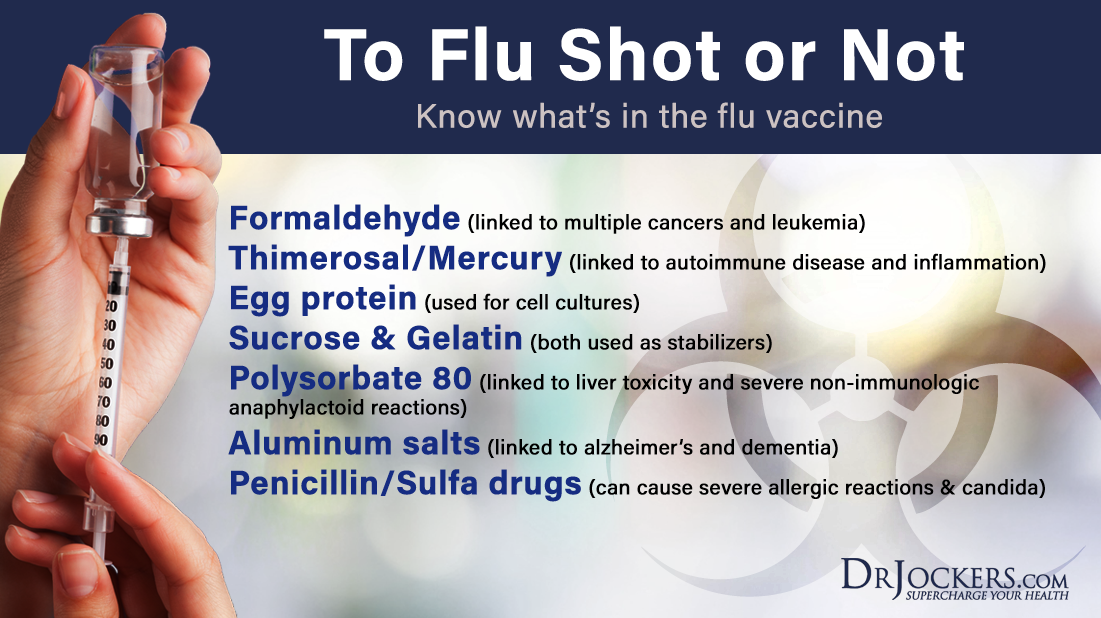 The vaccine was tested for safety and efficacy on the US military, before being licensed for wider use in
The vaccine was tested for safety and efficacy on the US military, before being licensed for wider use in
1945.
© WHO, Eric Schwab
Miss H.B. Donald of Melbourne, Australia at the Siemeus electron microscope
©
Credits
Multiple strains
Researchers had long suspected that different types of influenza viruses existed, as the blood of some influenza patients did not develop antibodies to the strain isolated in 1933. During the testing period, scientists also discovered the existence
of another strain of the virus: influenza B.
In 1942, a new bivalent vaccine was developed that protected against both the h2N1 strain of influenza A and the newly discovered influenza B virus.
During the 1947 flu season, researchers discovered that existing vaccines were ineffective against the flu viruses circulating at the time. To investigate the viruses in circulation, the World Health Organization (WHO) established the Worldwide Influenza Centre in 1948 and the Global Influenza Surveillance and Response System (GISRS) in 1952.
Scientists could now manufacture vaccines based on the monitoring of virus strains in circulation around the world, updating the strains targeted by the vaccine in response.
Efforts to track the evolution and emergence of flu viruses continue today, and scientists monitor both seasonal and potentially pandemic flu strains. Because new strains appear frequently, the seasonal flu vaccine usually changes each year, as scientists
determine how the virus has mutated and spread.
Each year, WHO recommends virus strains for inclusion in flu vaccines for each hemisphere, and different vaccines are developed, targeting 3 or 4 strains of the virus predicted to be most commonly circulating in the coming flu season.
© CDC
This historic image depicts a line of people each awaiting a New Jersey Influenza vaccination. Also known as the Swine Flu, this image was captured during a 1976 immunization campaign
©
Credits
Potential for pandemics
Influenza pandemics have occurred throughout history: records document at least 3 well before the 1918–19 pandemic, and another 3 have taken hold after, in 1957–58, 1968–69 and 2009–10.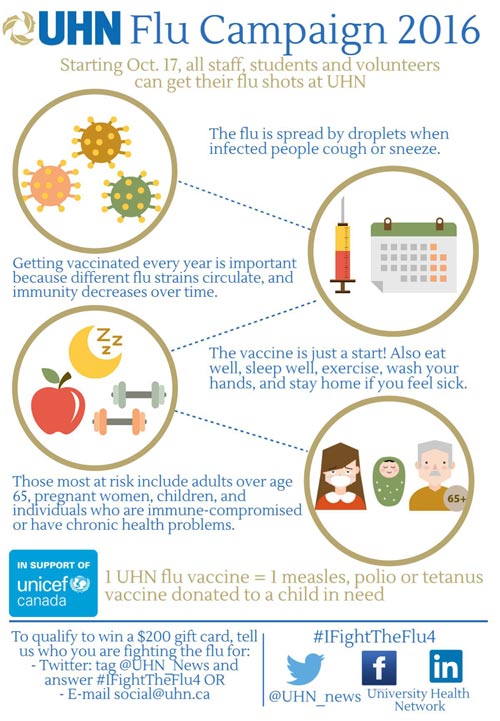
Influenza viruses with pandemic potential regularly emerge, but not all go on to cause a pandemic. WHO works to monitor influenza viruses with pandemic potential and to prepare for future influenza pandemics.
© WHO, Noor Images, Olga Kravets
Lyon, France, 9 March 2022; Institute of infectious agents, University Hospital Lyon. A lab technician at work, seen through the automated PCR system instrument
©
Credits
Continued efforts
Researchers are constantly working to develop new vaccine technologies to keep a step ahead of the viruses.
A live attenuated vaccine delivered in the form of a nasal spray was first licensed in 2003, a vaccine using recombinant DNA technology was approved in 2013, and additional influenza vaccines based on newer technologies are being tested in clinical
trials.
Despite these efforts, seasonal influenza still kills up to 650 000 people a year globally.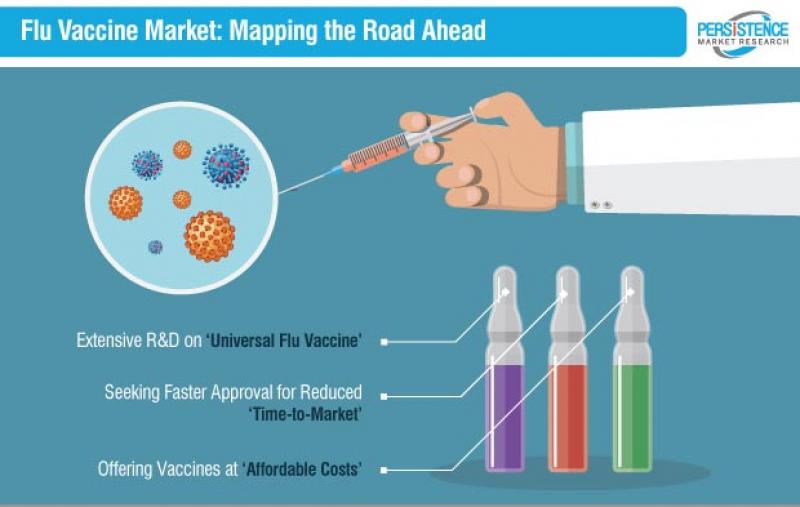 Influenza is a constantly evolving virus, and immunity to a single strain through infection or vaccination does not necessarily protect against new strains
Influenza is a constantly evolving virus, and immunity to a single strain through infection or vaccination does not necessarily protect against new strains
that develop.
We know from experience there is likely to be another flu pandemic, and we should be as well prepared as possible when it happens. That’s why monitoring the virus and keeping up with vaccination is crucially important.
Watch this video to learn more about the history, symptoms and treatment of Influenza.
Related history of vaccination stories
When was the Flu Vaccine Invented?
Mission: To save lives and reduce hospitalizations by protecting children, families, and communities against influenza.
Insights on Influenza
- Flu Vaccine Information
Posted on February 17, 2022
Share this article:
Flu vaccines have been around for a long time, and their development started almost 100 years ago! Below, we outline the flu vaccine development timeline:
- The 1930s: Scientists isolated the influenza A virus from animals to study the virus and learn how it can be weakened/killed to create a vaccine.

- Early 1940s: Jonas Salk, MD (yes, the same doctor who worked on the polio vaccine!) and others work to develop the first inactivated flu vaccine with support from the U.S. Army. The Army was particularly interested in supporting this research because many soldiers died from flu during the 1918 flu pandemic during World War 1.
- 1942: A vaccine that includes both influenza A and influenza B viruses is produced after the discovery of influenza B viruses.
- 1945: The first flu A vaccine is licensed for use in the United States.
Although some of the technology has changed and flu vaccines now include 2 types of influenza A and 2 types of influenza B, the science is still based on what was discovered almost 100 years ago. Because flu viruses can evolve quickly and new mutations have occurred (like h2N1), the viruses included in flu vaccines are updated every year to match the types of flu most likely to make people sick.
Sources:
https://www.historyofvaccines.org/content/articles/influenza
https://www.cdc.gov/flu/pandemic-resources/pandemic-timeline-1930-and-beyond.htm
You might also be interested in…
Add to Calendar: Keeping Your Kids Up to Date on Essential Vaccines
What You Should Know About the Recommended Childhood Vaccinations Schedule
Flu Vaccine & Cancer: Should You Get Vaccinated?
Find a Flu Vaccine
Vaccine Finder
Stay Informed
Sign up for our Weekly Flu News and quarterly newsletter, Fighting Influenza, to stay up-to-date on the latest flu news.
LOGO LICENSE AGREEMENT
You are required to accept all of the terms and conditions in this License Agreement in order to receive a limited, non-exclusive, non-transferable, non-assignable, royalty-free license to use the FAMILIES FIGHTING FLU, INC. logo, displayed below (the “FFF Logo”), from Families Fighting Flu, Inc. (“FFF”). In order to accept these terms and conditions, you must click the “I Accept” button below.
- FFF hereby grants to you, and you accept, a limited, non-exclusive, non-transferable, non-assignable, royalty-free license to use the FFF Logo, which you may download and use solely in online and print earned media publications for a period of no more than six (6) months in the United States.
- You acknowledge that the FFF Logo is a valid trademark; that FFF is the sole owner of the FFF Logo; and that FFF retains all right, title, and interest in and to the FFF Logo. You agree that any and all use that you make of the FFF Logo, and any and all goodwill arising from your use of the FFF Logo, shall inure exclusively to the benefit of FFF. You also agree that you shall not challenge the validity of the FFF Logo or FFF’s ownership or title thereto during the term of the License Agreement or thereafter.
- You agree that you shall use the FFF Logo only in the form shown above, and that you shall not alter, modify, change, or edit the FFF Logo in any manner.
- You acknowledge the valuable goodwill and reputation in the FFF Logo, and that it is essential that the high standards and reputation associated with the FFF Logo be maintained.
 You therefore agree to use the FFF Logo consistent with the highest standards of quality so as to protect and maintain the FFF Logo and FFF’s rights therein.
You therefore agree to use the FFF Logo consistent with the highest standards of quality so as to protect and maintain the FFF Logo and FFF’s rights therein. - FFF shall have the right to review and inspect your use of the FFF Logo at any time. FFF, in its sole discretion, may determine that you are not using the FFF Logo in an acceptable manner and require that you discontinue your use of the FFF Logo. To the extent that FFF requires that you discontinue your use of the FFF Logo, you agree that you shall remove the FFF Logo from all online and print earned media publications as soon as practicable under the circumstances, and that you shall not use the FFF at any time in the future.
- You must include the following notice in connection with any use of the FFF Logo: “The Families Fighting Flu, Inc. logo is the registered trademark of Families Fighting Flu, Inc.”
I Accept
A preventive campaign against influenza has begun in Russia
Latest issue
WG-Week
Motherland
Thematic applications
Union
Latest issue
Society 9 0003
09/11/2021 06:00
Share
Irina Nevinnaya
Annual prophylactic flu vaccination started in September. Experts say vaccination is a must. But many doubt whether it is possible to be vaccinated twice – against COVID-19and flu. Questions from readers of “RG” – Weeks are answered by our permanent experts.
Experts say vaccination is a must. But many doubt whether it is possible to be vaccinated twice – against COVID-19and flu. Questions from readers of “RG” – Weeks are answered by our permanent experts.
Gettyimages
Why get vaccinated against flu if there was no epidemic last year?
“Indeed, in the last epidemic season in Russia, only isolated cases of influenza were detected. The same situation was observed in other countries – either there was a sporadic incidence or small local outbreaks,” the deputy director for clinical and analytical work of the Central Research Institute of Epidemiology of Rospotrebnadzor told RG. Natalya Pshenichnaya – But the fact that there were few cases of influenza a year ago does not mean at all that it will not come this autumn-winter.
Moreover, the head of Rospotrebnadzor Anna Popova, announcing the start of the vaccination campaign, noted that isolated cases of influenza are already being registered, and a variant of the A (h4N2) virus (swine flu) has been identified, which is considered one of the most dangerous, as it causes a rather severe the course of the disease.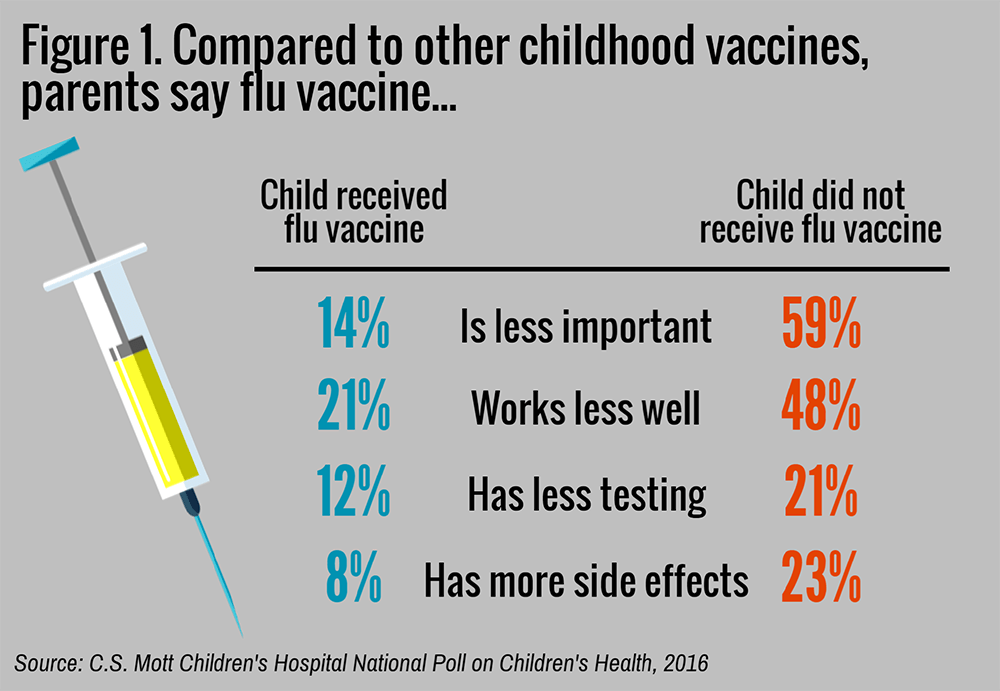
It was this strain that caused a severe epidemic in the winter season of 2009-2010. “This is not the best prognostic sign,” Popova said.
Therefore, epidemiologists and infectious disease specialists are unanimous: a flu shot is needed.
What influenza vaccines will be used this year?
The composition of strains of influenza viruses that have been identified in various laboratories around the world partly changed throughout the year. Therefore, in order to prepare for the new season, the composition of vaccines was recommended to be updated once again. Influenza A virus strains began to be frequently registered – A/Wisconsin/588/2019, A/Cambodia/e0826360/2020, A/Victoria/2570/2019, which practically did not circulate a year earlier. They were included in the updated vaccines. Type B influenza virus strains – B/Washington/02/2019and B/Phuket/3073/2013 circulated this year and the year before. Therefore, they are unchanged included in the composition of the vaccines of the upcoming epidemic season, – explained Natalya Pshenichnaya.
Trivalent and quadrivalent influenza vaccines are available. What is the difference?
Trivalent vaccines include three strains of influenza virus: two strains of type A and one type B. A fourth strain B is added to the quadrivalent vaccine. Therefore, quadrivalent vaccines are considered more effective – as they protect against more variations of the virus.
As “RG” – Nedelya was informed in the company “Natsimbio”, which ensures the production of vaccines and their delivery to the regions, this year the production of more modern quadrivalent vaccines has been increased, accordingly, it will be easier to make such an inoculation.
Does the flu vaccine protect against the coronavirus?
No, it does not, because these are different infections, different viruses. Therefore, two vaccinations are needed: against COVID-19 and influenza. At the same time, influenza vaccination due to the ongoing epidemic of COVID-19very important. “Firstly, simultaneous infection with the influenza virus and SARS-CoV2 leads to the development of more severe forms of respiratory infection and increases the risk of death. Secondly, the clinical picture of these two viral infections is often difficult to differentiate, which can lead to incorrect treatment tactics before laboratory confirmation of the diagnosis, which is especially dangerous for people with comorbidities,” Pshenichnaya notes.
Secondly, the clinical picture of these two viral infections is often difficult to differentiate, which can lead to incorrect treatment tactics before laboratory confirmation of the diagnosis, which is especially dangerous for people with comorbidities,” Pshenichnaya notes.
Will it be possible to get a flu shot with an imported vaccine?
Sanofi, which has been supplying the Vaxigripp vaccine to Russia for many years, explained that this trivalent vaccine will no longer be supplied – the company has stopped its production and switched to the production of a more modern quadrivalent vaccine. “We have submitted a quadrivalent vaccine for registration in Russia, and the corresponding procedure is now underway. When this vaccine is registered, we will be able to inform about the possible timing of its supply and when it becomes available in Russia,” Yury Mochalin, director of for Sanofi Corporate Relations in the Eurasian region.
“Based on the experience of past years, Russian flu vaccines have always been available since the end of summer, and foreign vaccines have not appeared until October – these are the nuances of supplies, since domestic needs are fully covered by our manufacturers,” said Maxim Stetsyuk, First Deputy Head of Nanolek. – Therefore, most likely, if a foreign vaccine appears in private clinics, then later. But I would say that I see no reason to wait for foreign flu vaccines. We produce our own vaccines no worse in quality and efficiency. Now Russian pharmaceutical companies biotech drugs are produced in state-of-the-art factories, processes are built according to international GMP standards, all factories are audited according to international standards. Vaccines undergo evidence-based clinical studies before they are registered and included in the supplies under the National Immunization Schedule.”
– Therefore, most likely, if a foreign vaccine appears in private clinics, then later. But I would say that I see no reason to wait for foreign flu vaccines. We produce our own vaccines no worse in quality and efficiency. Now Russian pharmaceutical companies biotech drugs are produced in state-of-the-art factories, processes are built according to international GMP standards, all factories are audited according to international standards. Vaccines undergo evidence-based clinical studies before they are registered and included in the supplies under the National Immunization Schedule.”
Where can I get a flu shot?
Vaccination is done in a polyclinic at the place of residence within the framework of compulsory medical insurance, that is, free of charge, – explained Sergey Shkitin, expert of the All-Russian Union of Insurers. – Vaccination is also carried out in specialized vaccination points. You can find out where it is better to get vaccinated by calling the “hot line” to your insurance company, the one that issued you the CHI policy.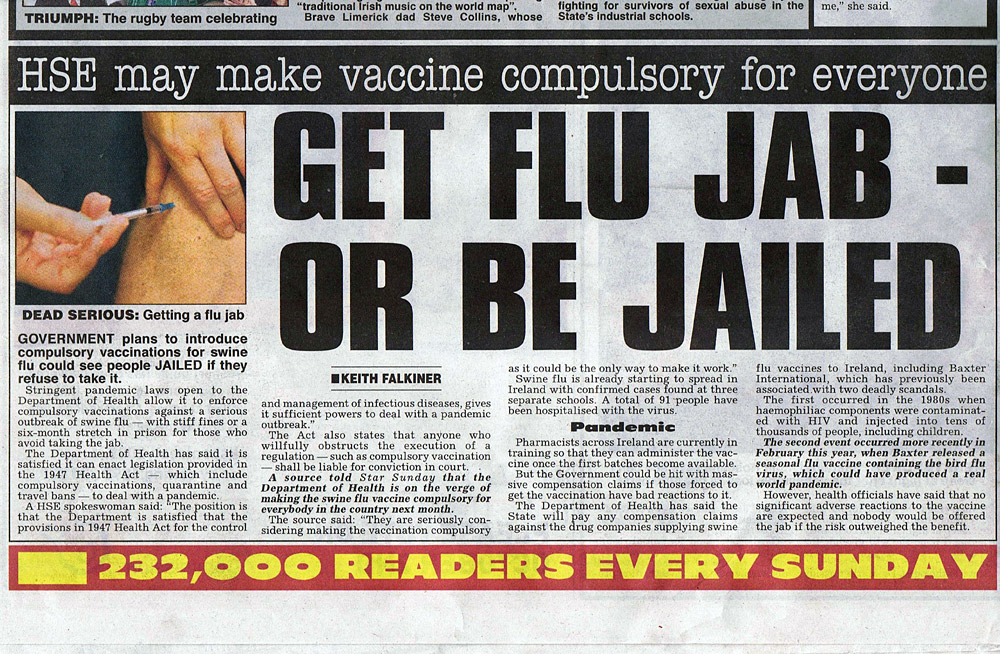
Blitz
How to combine flu shots and COVID-19
Can flu shots be given to people who are vaccinated against covid?
It is possible and necessary.
How do these vaccines get along?
Vaccinations against various infections are often performed simultaneously (using combivaccines) or one after the other after a period of time. The recommended interval between flu and COVID-19 shots is about a month.
Is it correct to get the flu and pneumonia shots at the same time (on the same day)?
Yes, influenza and pneumococcal shots can be given to risk groups (eg the elderly) on the same day. This is fine.
Who is at risk for flu shots?
Influenza vaccinations are indicated as a priority for the following groups:
- – Children from 6 months of age.
- – Schoolchildren of grades 1-11.
- – Students of universities and colleges.

- – Some occupational groups: employees of medical and educational organizations, transport, public utilities and service provision.
- – Shift workers.
- – Employees of law enforcement agencies and employees of checkpoints across the state border.
- – Social workers and employees of the MFC.
- – State civil and municipal employees.
- – Pregnant women.
- – Citizens over 60 years of age.
- – Conscripts.
- – People with chronic diseases of the lungs, heart, blood vessels, metabolic disorders and obesity.
Rossiyskaya gazeta – Week – Federal issue: №205(8556)
Share
HealthVaccinations and vaccination
5 myths about the influenza vaccine
9008 9 H
- Popular Topics
- Air pollution
- Coronavirus disease (COVID-19)
- Hepatitis
- Data and statistics »
- News bulletin
- The facts are clear
- Publications
- Find country »
- A
- B
- C
- D
- D
- E
- Y
- W
- W
- I
- Y
- R
- L
- M
- H 90 090
- O
- P
- R
- S
- T
- U
- F
- X
- C
- H
- W
- W
- b
- S
- b
- E
- Yu
- I
- WHO in countries »
- Reporting
- Regions »
- Africa
- America
- Southeast Asia
- Europe
- Eastern Mediterranean
- Western Pacific
- Media Center
- Press releases
- Statements
- Media messages
- Comments
- Reporting
- Online Q&A
- Events
- Photo reports
- Case Studies
- Questions and answers
- Speeches
- Update
- Emergencies ”
- News ”
- Disease Outbreak News
- WHO data »
- Dashboards »
- COVID-19 Monitoring Dashboard
- Basic moments ”
- About WHO »
- CEO
- About WHO
- WHO activities
- Where does WHO work?
- Governing Bodies »
- World Health Assembly
- Executive committee
Sily, 8 years old, China
©
Photo
Myth 1: Influenza is not a serious problem, so I do not need to be vaccinated
Facts: Up to 650,000 people die from the flu each year. And this is only data on respiratory diseases associated with seasonal influenza, which means that the likely negative consequences of influenza are even more significant. Even people in good health can get the flu, but people with weakened immune systems are especially vulnerable. Most people recover within a few weeks, but some people may develop complications such as sinusitis, ear infections, pneumonia, inflammation of the brain, or inflammatory heart disease.
And this is only data on respiratory diseases associated with seasonal influenza, which means that the likely negative consequences of influenza are even more significant. Even people in good health can get the flu, but people with weakened immune systems are especially vulnerable. Most people recover within a few weeks, but some people may develop complications such as sinusitis, ear infections, pneumonia, inflammation of the brain, or inflammatory heart disease.
Myth 2: I can get the flu from the vaccine
Fact: The flu vaccine contains an inactivated virus that cannot cause the flu. If you feel weak or have a slight fever, this is considered normal.
reaction of the immune system to the vaccine, which usually lasts no more than one to two days.
Myth 3: The flu vaccine can cause serious side effects
Facts: Influenza vaccination has been proven to be safe. Serious side effects are extremely rare. One in a million people may develop Guillain-Barré syndrome (GBS), which causes muscle
weakness and paralysis.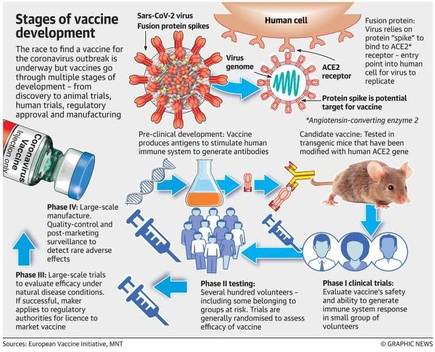


 You therefore agree to use the FFF Logo consistent with the highest standards of quality so as to protect and maintain the FFF Logo and FFF’s rights therein.
You therefore agree to use the FFF Logo consistent with the highest standards of quality so as to protect and maintain the FFF Logo and FFF’s rights therein.